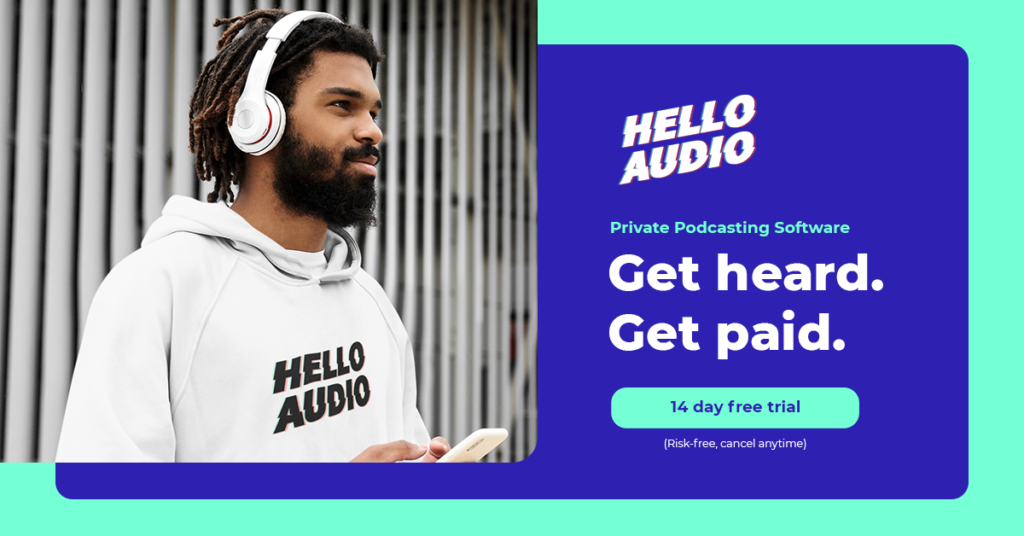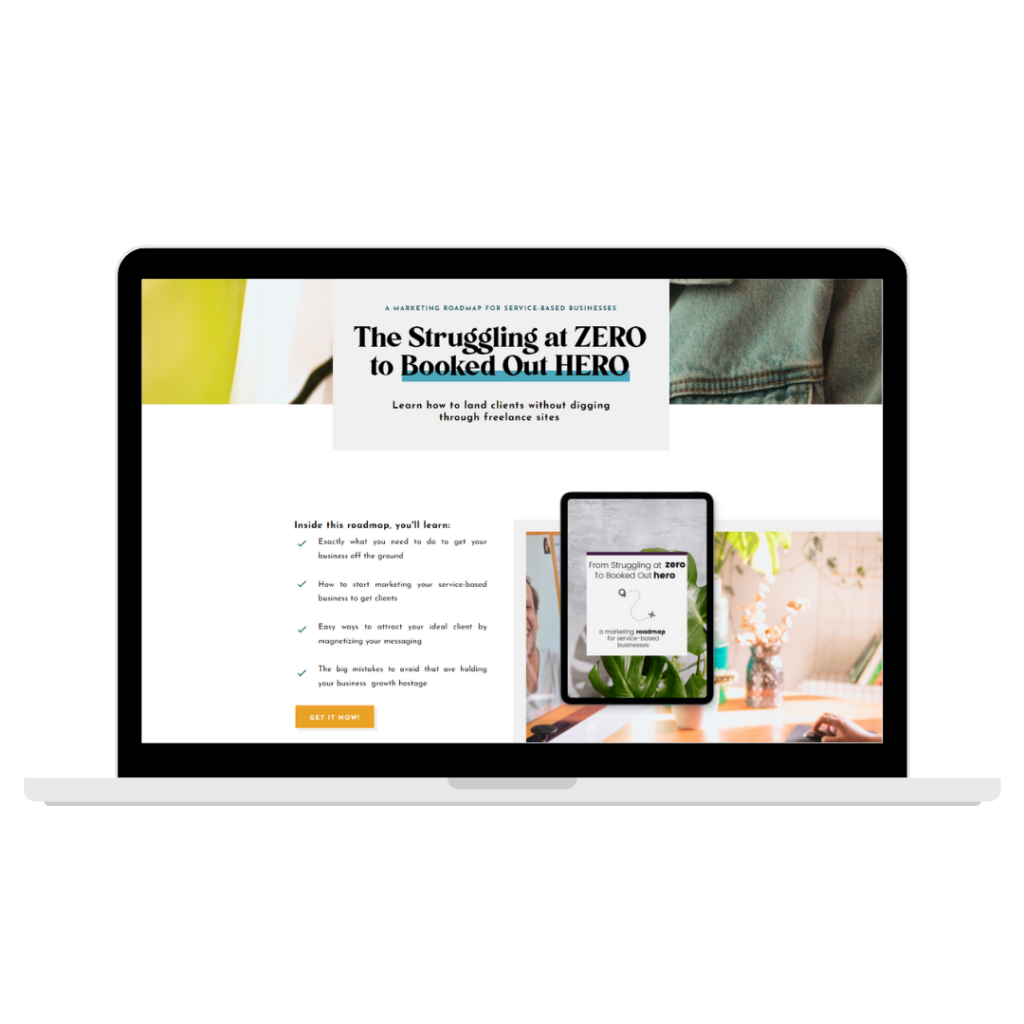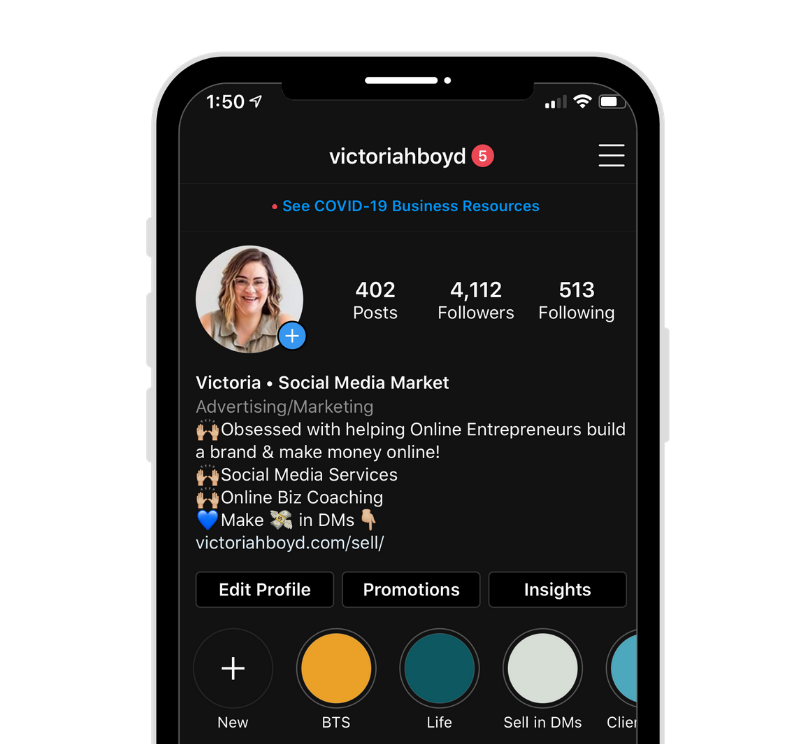Want to launch an offer in your business (whether that be digital, done-for-you, done-with-you, consulting/coaching, or even a physical product) in a way that leaves an impact and stands out?
Webinars, challenges, and masterclasses are the “typical” launch mechanism taught by online coaches. But if you’ve tried to launch in the last 6-months and had it flop, it might not be you. It might be that your audience needs something new to capture their attention.
What is a Private Podcast?
A private podcast feed is a type of audio feed that is restricted to your community members. It’s like an internal podcast where you can provide exclusive content, training, and more. Think about it like a webinar. They’re gated by needing to hand over your name and email address to access the information. A private podcast works much the same way.
Having a private podcast about your new product and providing it exclusively for people who are on the waitlist or have opted into it is a great way to accelerate the speed at which your audience converts. This unique approach will help build anticipation and excitement for when the product launches!
It’s important to note that this private audio feed is not just for launching products, but it can be used as an ongoing marketing strategy to provide exclusive content and training to existing customers too! … more on that later!
PS: If this topic is peaking your interest, you might also want to check out this podcast episode!
When to use a Private Podcast
A private podcast has a ton of use-case scenarios!
In marketing:
- Replace an opt-in you have in your business
- Compliment an opt-in in your business
- Launch an offer to a new or existing audience
Internally in business:
- Company-wide communications
- Use it to distribute messages or company updates that are too personal to share via email
- To train your employees, contractors, and interns
- Onboard new staff members
- Continuing education for staff
To complement:
- Offer a private podcast to let students access courses on the go … aka when they are doing the dishes, walking the dog, or headed to the gym
- As a bonus with periodically updated training
Anytime that you have content you’re trying to distribute to a specific subset of your audience, a private podcast can be used.
In this blog post, I’ll be focusing on using a private podcast (I also sometimes call it a private audio feed) to launch something in your business.
Step 1: Decide what you’re selling
Ideally, what you’re selling with a private audio feed is something you’ve sold before. I call this a “validated offer” because it’s been validated (through people paying you!) for your offer.
So the first step is to braindump your ideas. What do you have that you’ve sold before, that you want to sell again?
The approach to the launch will vary slightly depending on if you’re launching a service, a digital offer, or a physical product. You’ll also want to take inventory of if you want to just go evergreen with this private audio feed OR if you’re going to take it down after a specific launch window.
Step 2: Ask yourself what your audience needs to know before they invest
One of the lame parts of a webinar (which I think is why we are all so dang burnt out by them!) is the amount of FLUFF pure FLUFF included!
The only real fluff in your podcast is going to be your trailer which will likely be less than 5 minutes in length. It’s where you’ll introduce yourself, your private feed, and share a little about the offer at the end. That’s it. Gone are the days where we try to force our audience to listen to 20-minutes of how badass we are. We get it, James. *queue eye roll*
When you’re preparing to outline your private podcast, it’s important to note what you want your audience to know before they buy your thing. Some ideas are:
- Maybe a mindset shift needs to take place. Maybe they need to see what is possible for them.
- If you’re teaching how to sell in the DMs, you may want to teach your audience how to audit their own Instagram bio first.
- If you’re creating a copywriting course, you may want your audience to do some market research first.
Step 3: Consider the Format
Choosing the format might seem simple… Your goal is to connect with the audience and give them value around a specific topic… So you might be thinking that all you have to do is talk about those issues right?
Not so fast, Sonic!
You’ll want to consider your audience here. What are they used to listening to on the reg? Do they typically hear a lot of interviews? Solo shows?
Now, this doesn’t HAVE to guide how you do your private audio feed, but it is something to keep in mind!
Another thing to consider is how long you can talk about a topic on your own! Now, longer isn’t always better but sometimes having a friend on the mic with you can help the conversation flow.
Just something to keep in mind! Overall, how you deliver the show will affect the likelihood of its success.
One of the coolest parts of the private audio feed is that you can see who is listening to what and what the retention rate is of the show overall.
Let’s go through common types of shows you can consider:
- The solo show: This is my favorite. It relies on YOU doing EVERYTHING. From coming up with ideas to delivering the content.
- The co-host show: This is when you have two or more people hosting the episode. It’s nice because you can have some conversation naturally between hosts.
- The Interview show: This shares the spirit of the co-host show. People talking, having a conversation, etc! But the big difference is that one person on the show is a guest. An interview show would work great if you’re trying to share testimonials or case studies as part of your private podcast.
Step 4: Outline & Script Your Episodes
This is probably going to be the most time-consuming part. Outlining and scripting your private podcast is different from outlining a public podcast or even outlining a blog post.
I actually consider it much more like outlining an email launch sequence if you’ve done that before!
Episode 1: Trailer: Your trailer should tell your listener what they can expect listening to your private audio feed. Who are you? Why should they listen to you? What problem are you helping them solve? What can they expect while they listen to your show? How can they get in touch with you if they have questions?
Episode 2-5: Content: This is where you’ll want to introduce a new idea, teach your audience something, and provide value. Continue to get them excited to listen to the next episode.
Final Episode: Pitch: Recap all of the incredible information you’ve delivered and now is the time to PITCH! Tell them what the next steps are and invite them to continue working with you, however that looks.
Things to keep in mind:
- Keep in mind that not everyone listening will know who you are, so introduce yourself in the trailer. What makes YOU an authority that they should trust?
- Make sure it flows. You want it to feel like an organic conversation.
- Cut the fluff.
- When recording the Content portion, don’t be afraid to namedrop your offer! Begin building that offer recognition early. But DON’T PITCH IT until the final episode!
- Longer isn’t always better.
- Expect your content to be BINGED. But still, consider adding a 30-second recap to the beginning of each episode.
Personally, I don’t script my episodes. I create a small mind map that guides me through the episode. I make notes of everything I definitely want to hit – but that’s about it. When you script your episodes you tend to lose the ability to add personality to your podcast.
Step 5: Record & Edit
Once you’ve outlined your episodes, it’s time to record! Recording podcast episodes is shockingly easy and you don’t need anything special to do it. I’ve heard fab episodes recorded using just a pair of Apple headphones and an iPhone. Seriously, keep it simple with what you have at hand. You can always upgrade in the future.
If you do want to upgrade, I use (and recommend):
- Blue Yeti Mic
- Rode SmartLav+ Lavalier Mic
As far as recording space goes, I just record in my office. It’s carpeted with a lot of plushy and fluffy things (dog toys and beds mostly…). If your office space is hardwood or solid surface, you may want to record it on your closet floor. Sounds funny but it works in a pinch! I’ve also seen people throw a bunch of blanket sand towels on the floor to make a sound booth in their office. You’ll want to do some test recordings to make sure there isn’t an echo and the quality is good!
Editing can also be relatively simple! Focus on removing long pauses and anywhere you’ve messed up. That’s it! You can also add an opener or a closing song if you’d like.
Step 6: Upload
Once you’ve recorded and edited your episodes, you need to upload them to a place that allows your audience to have that private access!
I love Hello Audio for this. It’s the pioneer platform for private audio feeds. Hello Audio is a super easy platform to use and it’s affordable. You can create a private feed for your audience and then share the link with them. They can listen on their computer or phone, and even download the episodes if they’d like!
Hello Audio is simple to set up, you just set up your feed and upload your files. From there all you have to do is add listeners. Hello Audio is also loaded with incredible built-in features to help you get the word out.

Step 7: Begin Promotion & Add Listeners!
As you get closer to being ready for your big launch, you’ll want to promote your audio feed.
One of the first things I recommend you start with is creating a waitlist for your new private podcast. This is especially beneficial if you’re using your private podcast to launch with. Let your audience get hyped ahead of time and encourage them to spread the word!
Here is what you’ll want in place for launching your private podcast:
- A name & description for the private audio feed
- A waitlist page (optional but recommended!)
- Cover art – I recommend Canva! It’s loaded with templates you can use!
- An email sequence that will be triggered when they opt-in and go out every day
- Your sales & checkout page for your paid offer
Setting up your Landing Page:
When you’re creating your landing page/waitlist page/opt-in page for your private feed, there are a few necessities to the page.
- The title – give your private audio feed a memorable title.
- A description – what is your podcast all about? What can the listener expect?
- Email form – this is where you collect leads for your paid offer. You may want to include a name form here too! If you don’t have an email service provider yet, I use and recommend ConvertKit.
- If you’re planning to run ads to the landing page, you may want to include a short about you section.
Once you create your landing page, you’ll want to share it with your email list, promote it on social media, and even mention it in any interviews you do.

Step 8: Launch!
The interesting thing with the private audio feed is it can be used as a way to go evergreen. You don’t necessarily “have” to do a big launch. But if you want to, this is where you’d do it.
You’ll want to write a series of emails and really promote your offer & your private audio feed. Here are the emails I’d send:
- Email that introduces a problem then offers the podcast as a solution
- Your story
- Basic invitation email
- Send a preview of one of the episodes
- Let the know it’s officially here and remind them to sign up for your private audio feed
From there, you’ll want to create a sequence or automation for people that have opted into the private audio feed. That would look something like this:
- Email welcoming them to the audio feed and telling them how to get access
- 15-minutes later, emailing them about episode 1
- Your next few emails will come out in the days after highlighting one of the episodes in order
- Your “final” email should be pitching the offer that your private podcast is promoting
For bonus points, you could add in other launch efforts such as sales calls, selling in the DMs, and lead generation!
Step 9: Do a Launch Debrief
A launch debrief will give you a detailed rundown of what worked, what didn’t, and what you can improve upon. When you do a debrief and are able to look objectively at the data, magic will happen!
Here is what you’ll want to look at during a launch debrief:
- The Results: Total Revenue Generated, Total Customers, Total “Launch List” Size, Earnings Per Lead (if running Ads)
- Offer Breakdown: How many offers and payment plans were accessible, what was the breakdown of each option
- Sales Timeline: When did sales come through?
- Upsells/Downsells: Where there other opportunities to work with you? If so what did they look like?
- Audio Stats: What podcast episodes performed the best? How many listens per episode
- Additional Results: What worked well? What didn’t work well? What were your biggest takeaways?
If you’re interested in taking action and would like to learn more about how we can help your business launch a successful offer that captures the attention of your audience with minimal effort, I’ve partnered with my friend Kim Tradewell of May & James Co. to bring you Activated Audio Academy. We have an all-inclusive course for online entrepreneurs that teaches you how to plan, record, market, and launch your private podcast.
Did you get value out of this post? Can I ask for a quick favor? Would you mind leaving a comment and/or sharing with a friend? I want to reach as many people as possible with this info!
I get commissions for purchases made through links in this post.







Read the Comments +